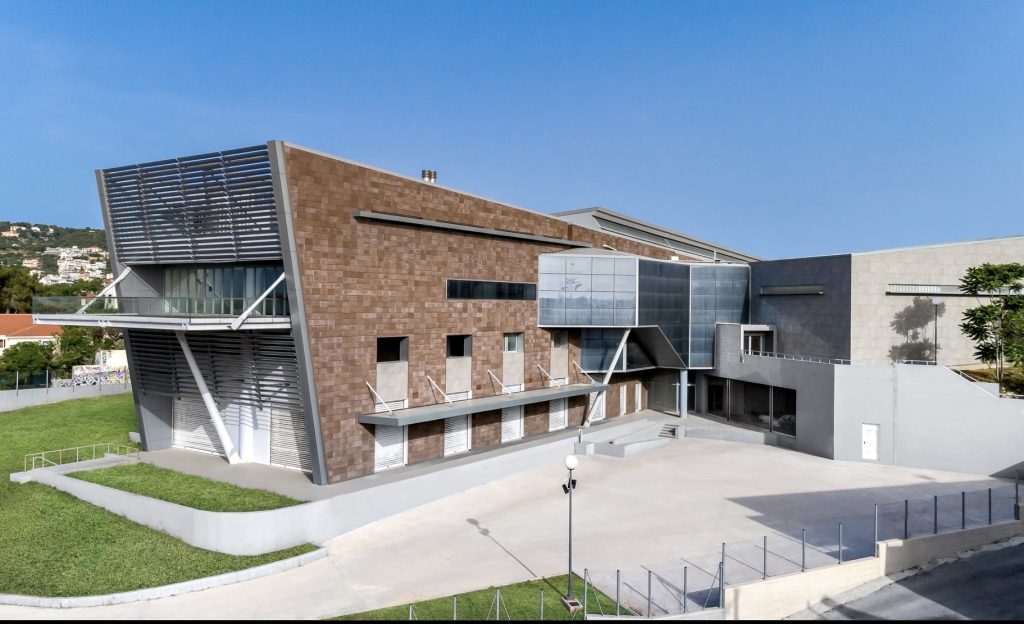
A visit to ancient Greece
Rain was forecast for today, although it never came, so I got a lift into town with Kostas and Haris, and went to see Chania’s new archeological museum.
It opened in April of this year to great fanfare. The Greek PM, Kyriakos Mitsotakis, was there. His mum and dad’s private collection of antiquities is housed inside, so he had a personal as well as professional interest in showing up.
His dad, Konstantinos, also had a spell as Prime Minister. He was PM when Kyriakos was born in 1968. At the time the family were under house arrest and, on the night when the Greek military took over, a period referred to in my intro post, his dad was thrown into jail. But that’s another story.
The new building cost in excess of 15 million euros, 14 of which came from the EU. It’s a very swanky affair occupying around 6000 square metres on a plot as large again. It looks expensive.
Personally, and at the risk of sounding a bit Prince Charlesy, I quite liked the museum’s previous home, the Venetian Monastery of Saint Francis. But it wasn’t really big enough and the new place is much more practical.
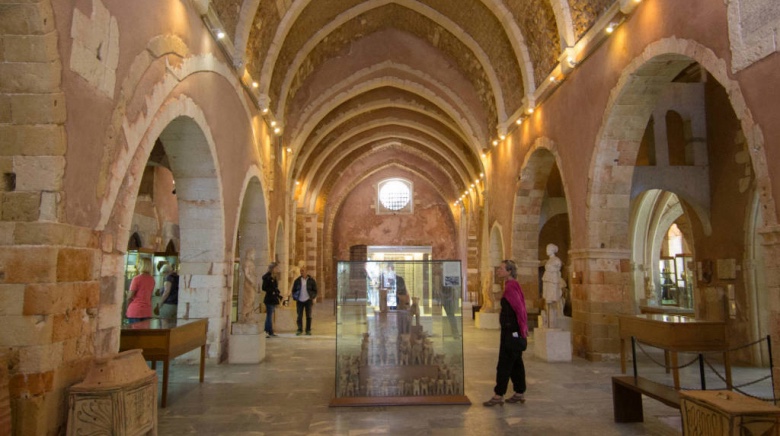
Inside’s great, even if it does look a bit like an industrial warehouse from outside. It’s really light and airy, with crisp white walls and parquet floors. And it’s got clever stuff like feature-controlled lighting, although I’m not sure what that means, and a perforated steel roof that can alter how sunlight enters the building, The big windowed cafe that overlooks the sea is a nice feature.
According to the architects, Bobotis and Bobotis (not to be confused with Bobbit and Bobbit who made world headlines in 1993 when wife, Lorena, cut off husband Wayne’s penis), their design drew inspiration from the natural environment, with ‘a holistic integration between exterior and interior environments’.
(The Bobbits divorced in 1995).

A large version of the picture above is what greets you as you enter the vast exhibition area. The footprints were found in Kastelli Kissamos, about twenty miles up the road from where I’m staying. They’re considered to be the oldest footprints in the world made by the ancestors of humans. Until they were discovered, the oldest ever found had been in Tanzania, and were only 3.6 million years old, suggesting that our ancestors may have left Africa far earlier than was previously thought. It’s quite a punchy opener.
If I’m honest, fascinating as the museum was, which held my interest for a good hour or so, the sheer volume of items displayed is quite overwhelming. There are over 3,500, spanning thousands of years and the vast space of the museum. Even if you were to give each item a cursory glance it would take days to see them all. So I skipped a few thousand exhibits and homed in on the ones that caught my eye. This is a tiny snapshot of what was there and has been curated unashamedly based on what took my fancy.
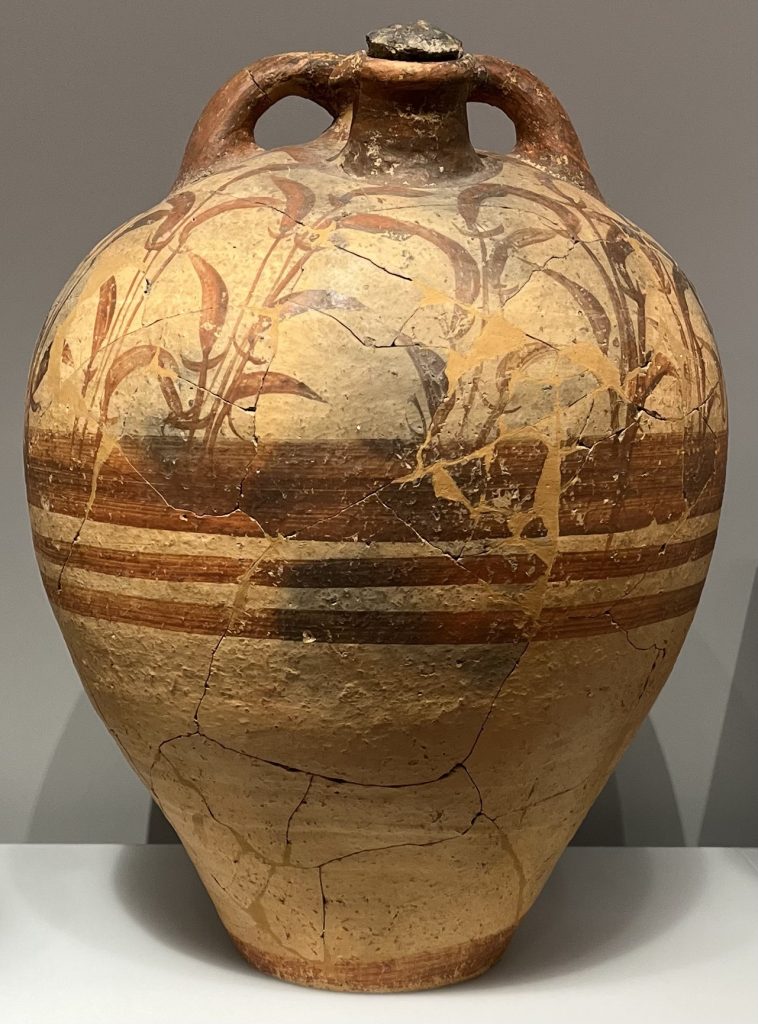
This is a stirrup jar, complete with a stopper, which, as the blurb beside it rather unnecessarily pointed out, was ‘to seal the liquid inside’. So what were the handles for?
I couldn’t take my eyes of it for a while. This huge and beautiful thing, about three feet tall, had been made by someone half an hour away from where I was standing. For thirty-five centuries it lay somewhere in pieces and unseen. And now it was there, intact and wonderful, viewed by thousands of people every year. I thought the reeds around the top were a lovely touch.
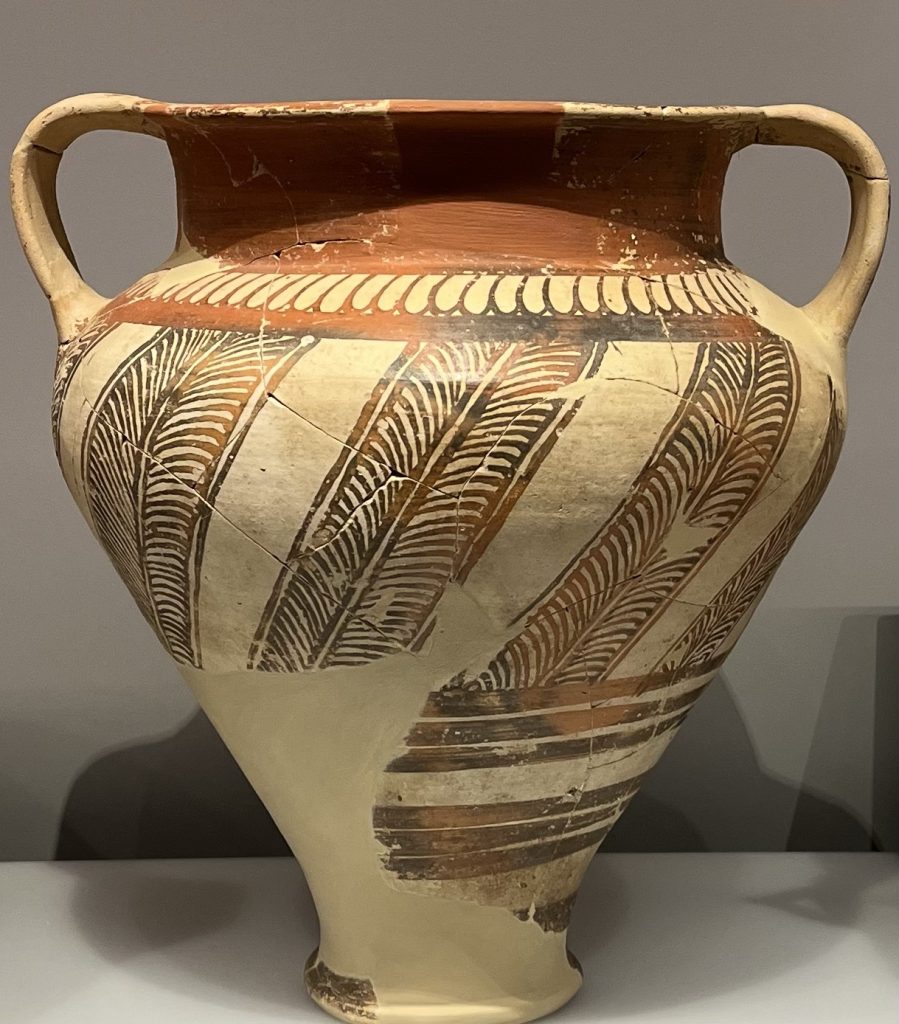
And they just kept on coming. This beauty, described only as a beaked jug with decoration of concentric circles, is roughly the same age and size.
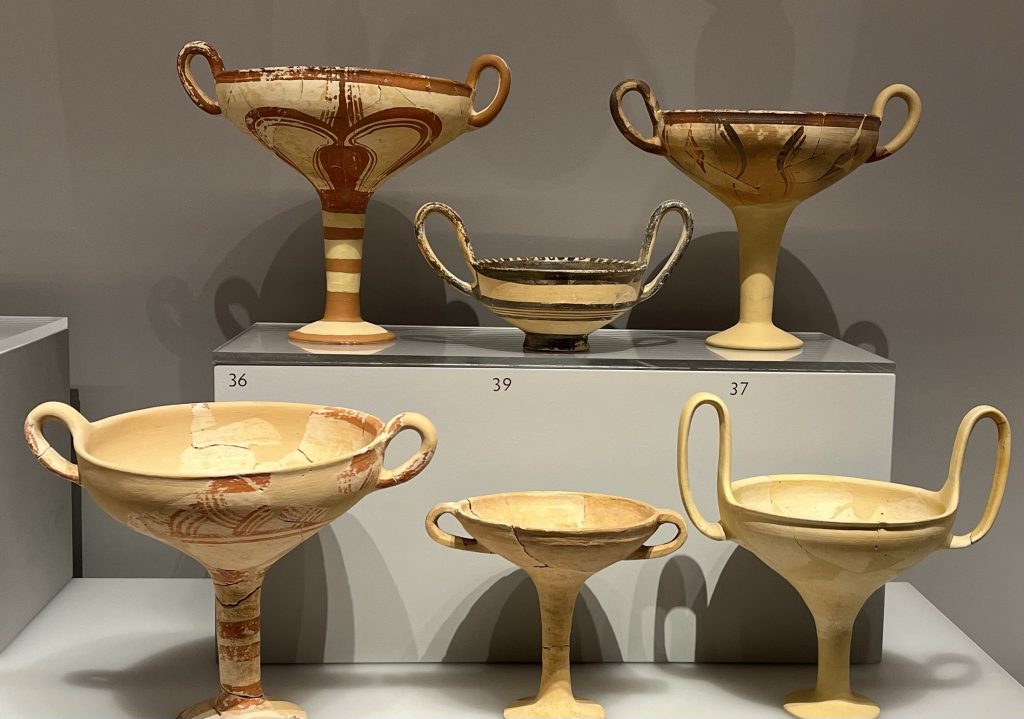
Kylikes are drinking cups with a stem, two handles and a broad, shallow body. They’re roughly 3.300 years old. I’d like one.
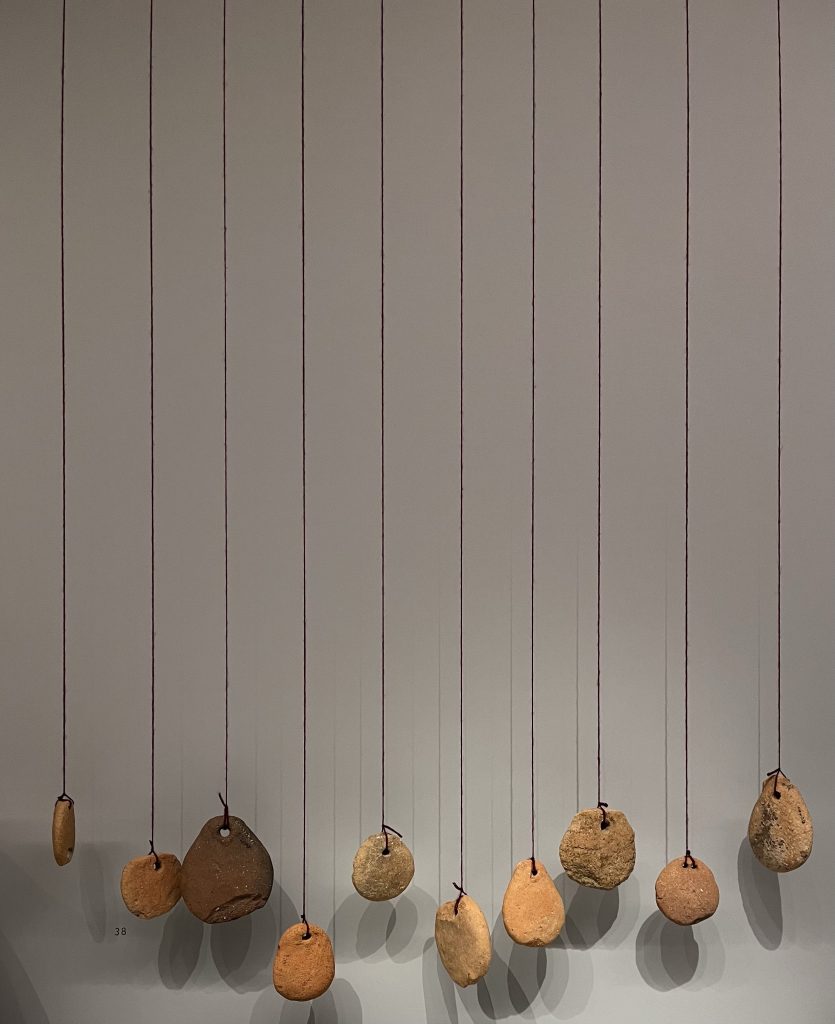
There’s nothing particularly special about these apart from their elegant simplicity. They’re weights used to stretch the warp threads of a vertical loom, allowing the shuttle to pass between them and weave the cloth. They’re about 3,300 years old but I could see them hanging in an art gallery today.
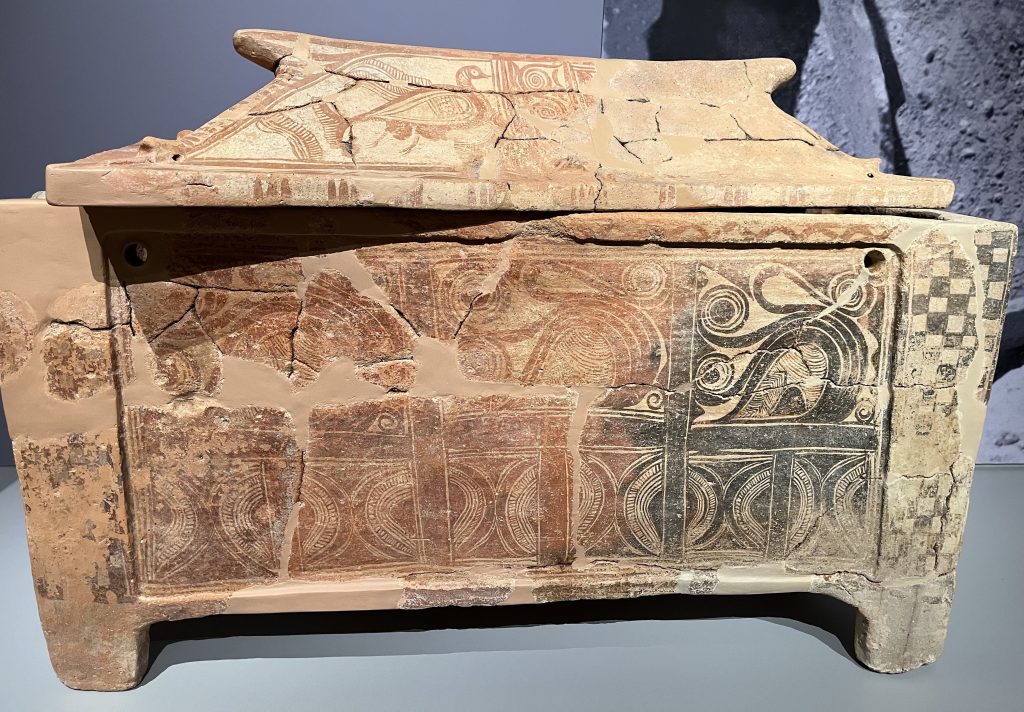
Clay larnakes were coffins, usually decorated with floral and marine motifs, sacred symbols and religious scenes. They appeared in Crete about 4,000 years ago.
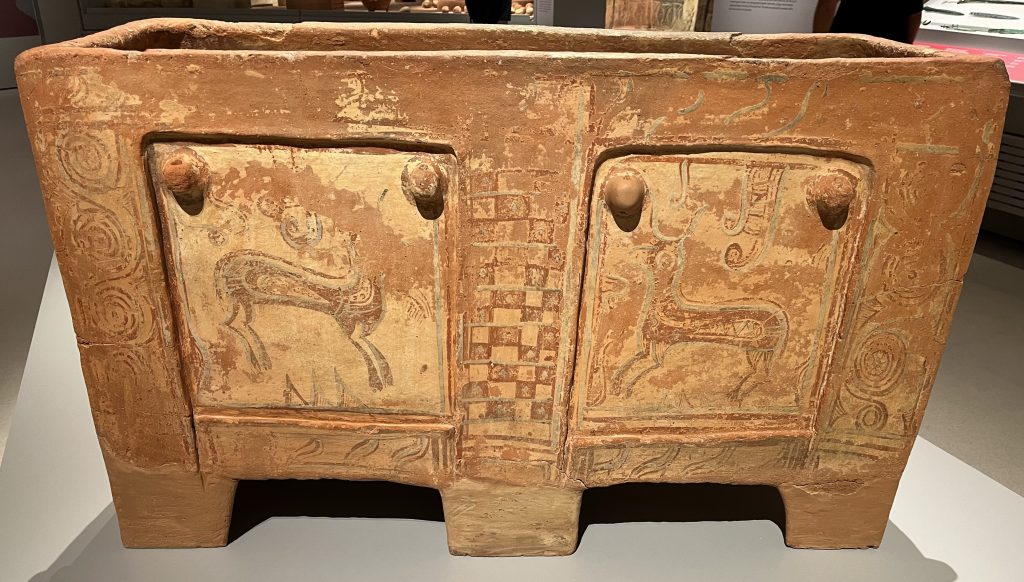
This one’s from about 1350-1300 BC.
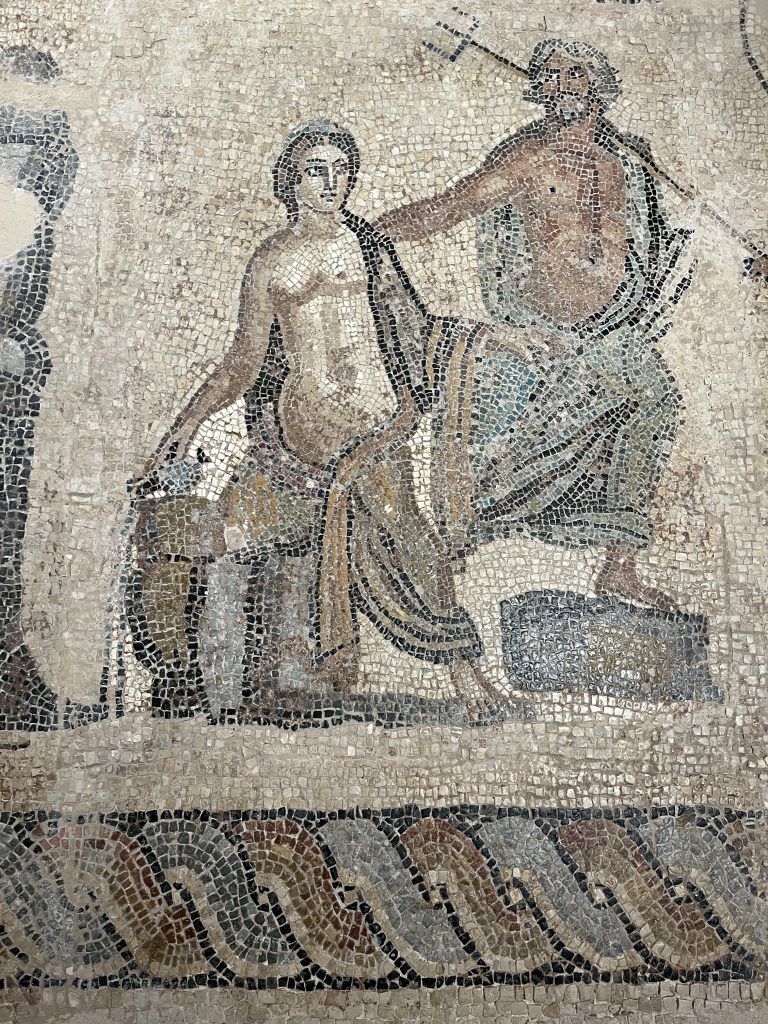
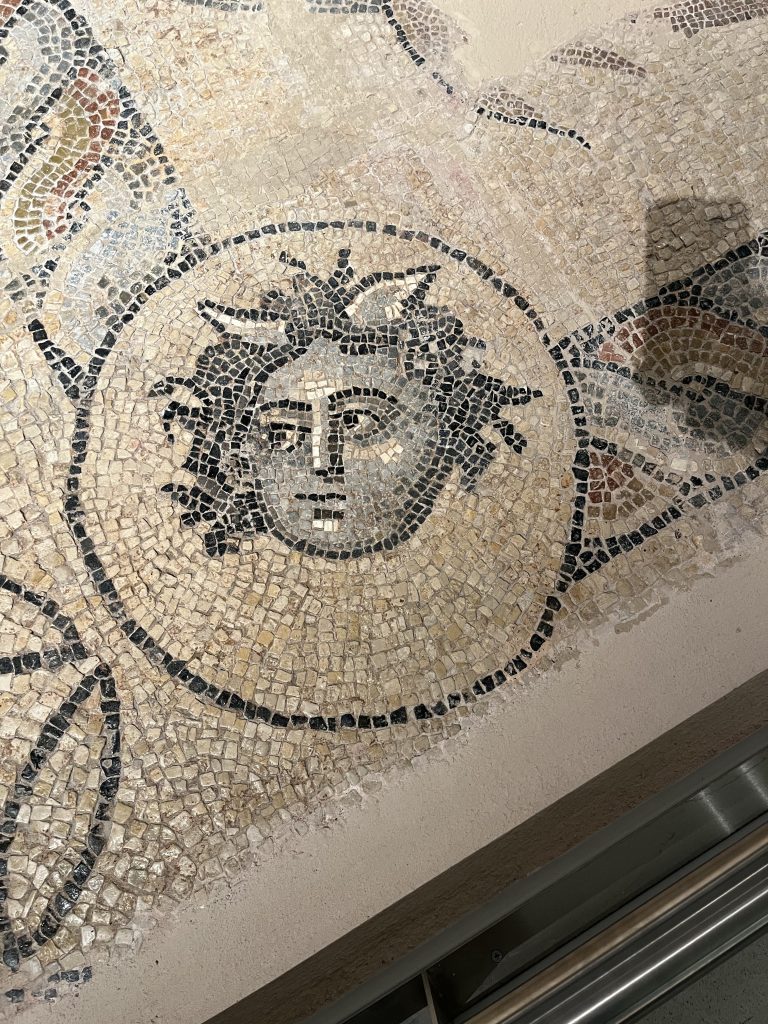
These two are a broad and detailed shot of a mosaic from the ‘House of Poseidon and Amymone’, ancient Greece’s version of what Allied Carpets produce for our homes today. Thousands of pieces painstakingly laid in the third century AD.
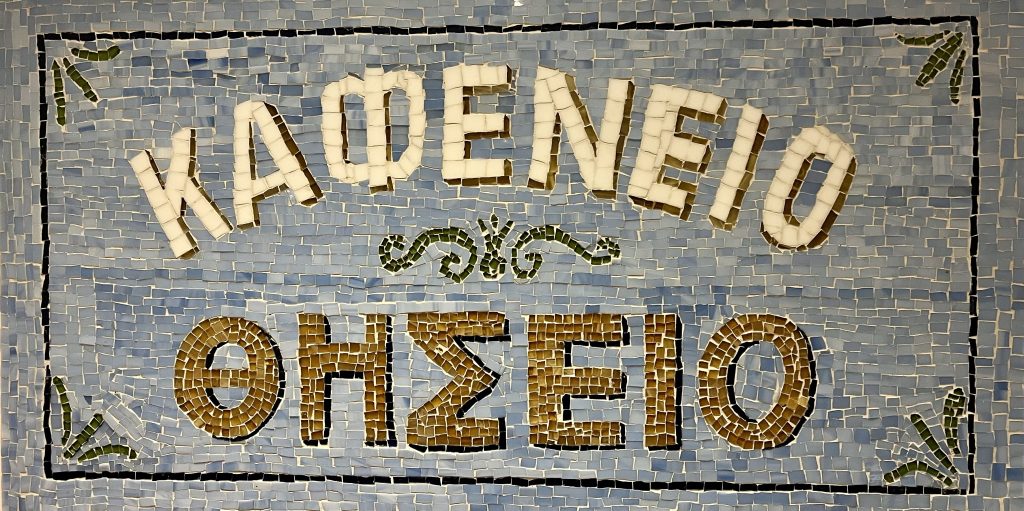
Just thought I’d slip this one in. This is a mosaic based on a painted wooden sign outside a kafenion I once frequented in Athens, of which I took a photo years ago. I created the mosaic in 2011 AD. It took an age to complete. Something that fills a whole floor of a house is something else completely.
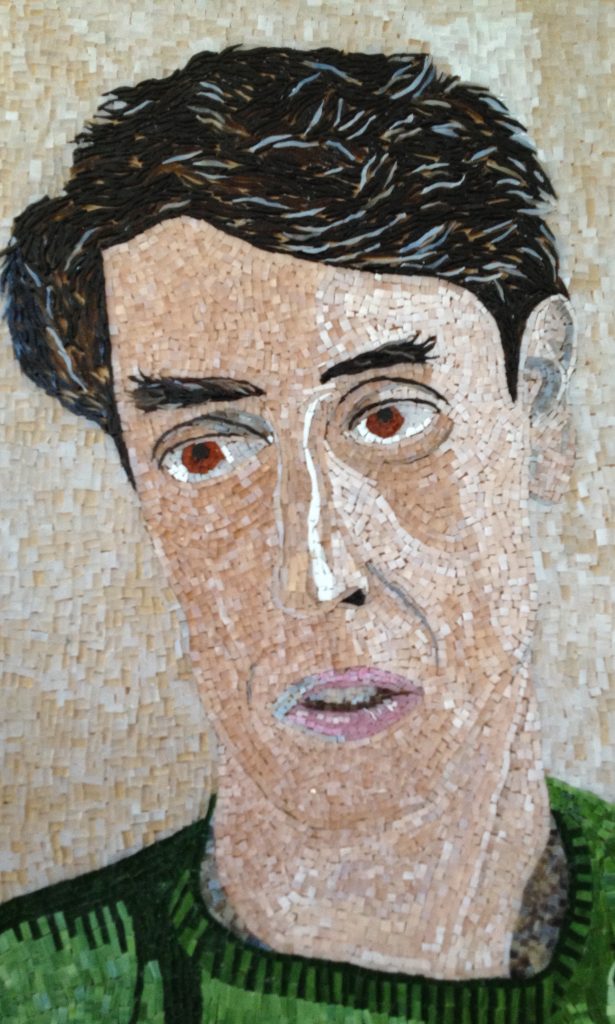
While I’m at it, here’s another one I did of the painter, John Minton, circa 2012 AD. It wasn’t quite finished when I took the photo. It’s bigger than the one above and took much longer. I based it on a 1952 painting of him by Lucian Freud, which captures the sadness in his eyes. There’s a link to it here.
Minton was a painter, illustrator, stage designer and teacher. Sadly, his particular style of painting went out of fashion and he got quite depressed, self-medicating with alcohol until he committed suicide in 1957.
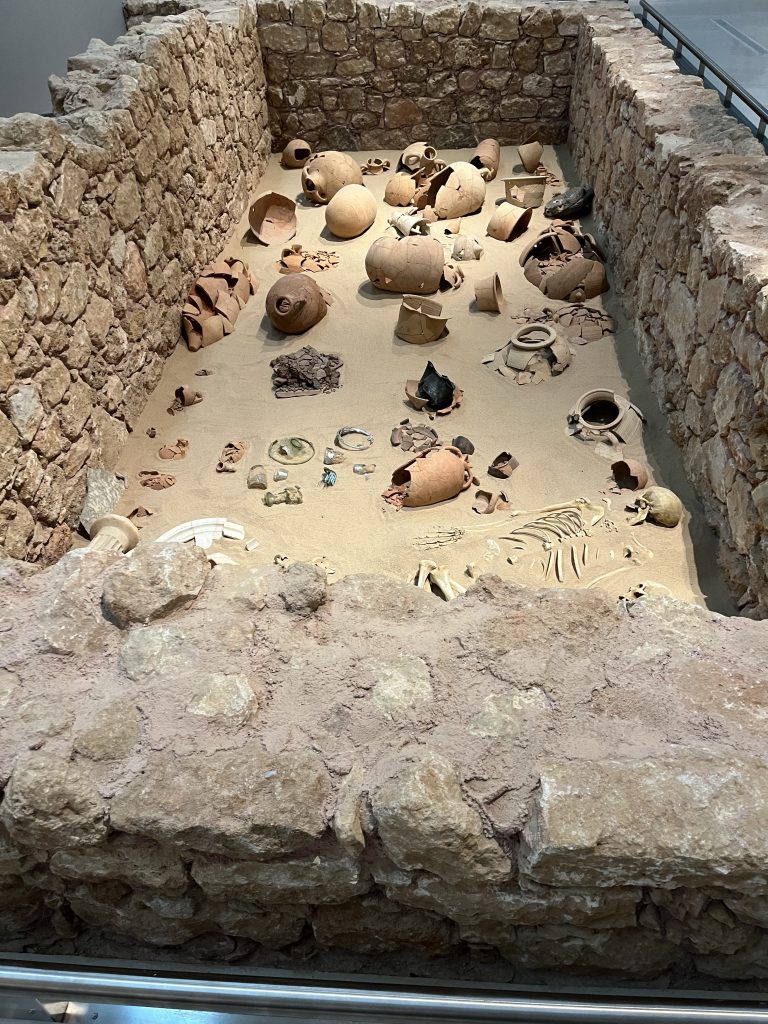
The image above is a reconstruction of what the blurb described as a ‘misers house’, found just up the road in Kissamos. It was flattened by an earthquake almost 2,000 years ago. It described how the inhabitants had rushed to the basement on the day of the quake to retrieve three coin hoards, and were crushed by the building’s collapse.
The most valuable hoard was found in a purse, presumably buried beneath the floor by their ancestors in 268 AD. Loads of household items were found there too, including various pots and stone tools. They even found a bronze cooking pot with the preserved remains of their last meal, a seafood dish.
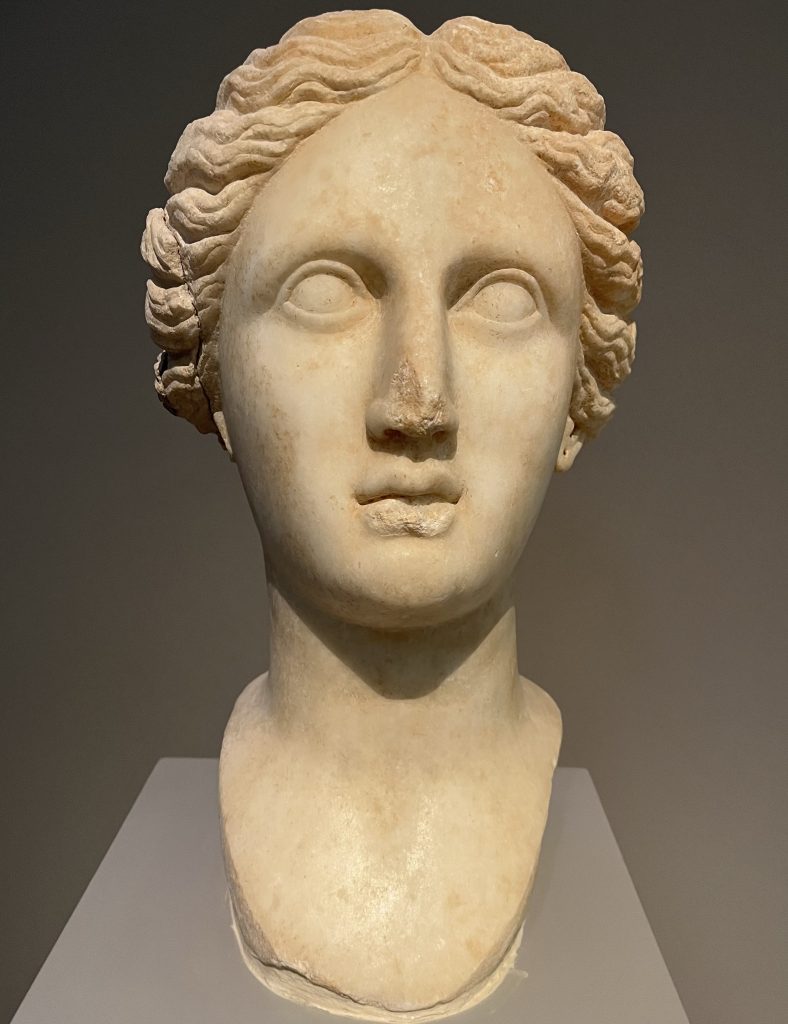
When I got to this, although I’d seen much else in between the pictures posted here, my stamina was waning. So I’ll leave you with her for now. She’s over 2000 years old and was found in Lissos in the third century BC. Nobody knows who she was.
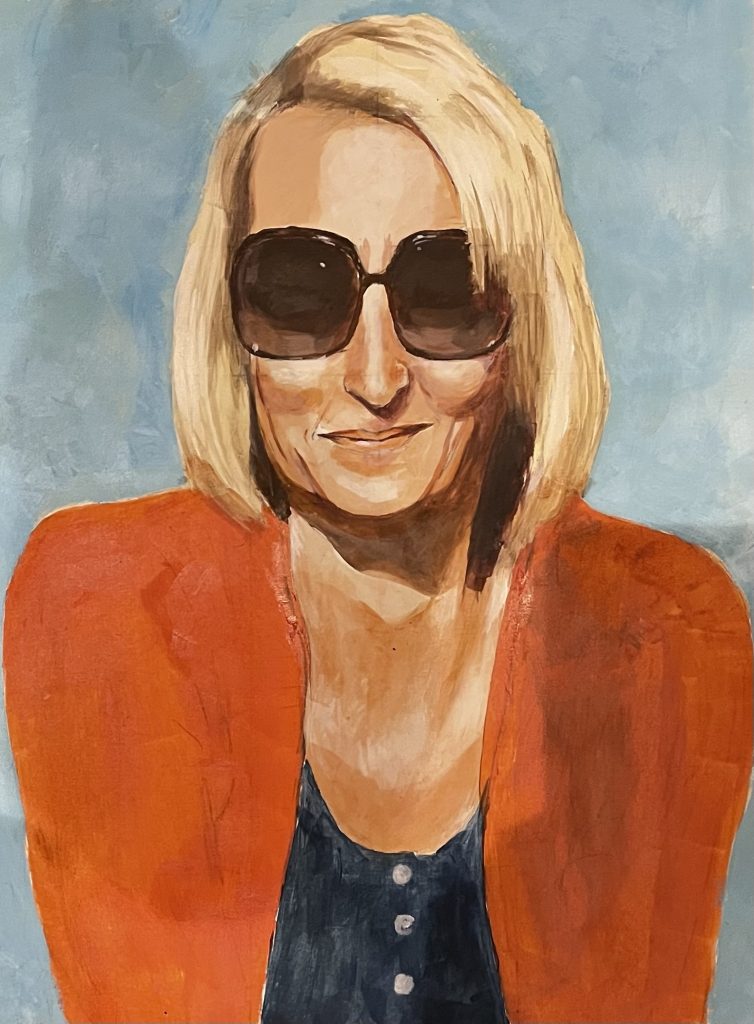
Actually, one more.
Just to continue my showy insertion of stuff that I’ve created, this one having nothing to do with Ancient Greece at all, but prompted by ending this thread with a woman with no name, I’ll end with a painting I did of Pip earlier this year.
I’d made several attempts to paint her since she died, all abandoned because I just couldn’t get them right. Then I signed up for an evening portrait painting class run by an artist, Genevieve Murray. It ran for afew weeks and I learnt a lot. She was a great teacher.
Because I hadn’t quite finished it when the course was up, I took one more lesson and on the morning that I’d put down my brush, stood back and thought, ‘that’ll do, it’s not perfect but I’m happy with that’, my phone started pinging, and there were messages from family saying that they were thinking of me. It would have been our thirtieth wedding anniversary that day, which was one of those strange, slightly other worldly coincidences that sometimes happen. It made my day.
28.02.22 AD
Lovely Andy. Does the man’s creativity know no bounds! Will miss this… xx
Thank you Angie – and apologies. I’ve slipped up on my promise to let you know about new posts xx